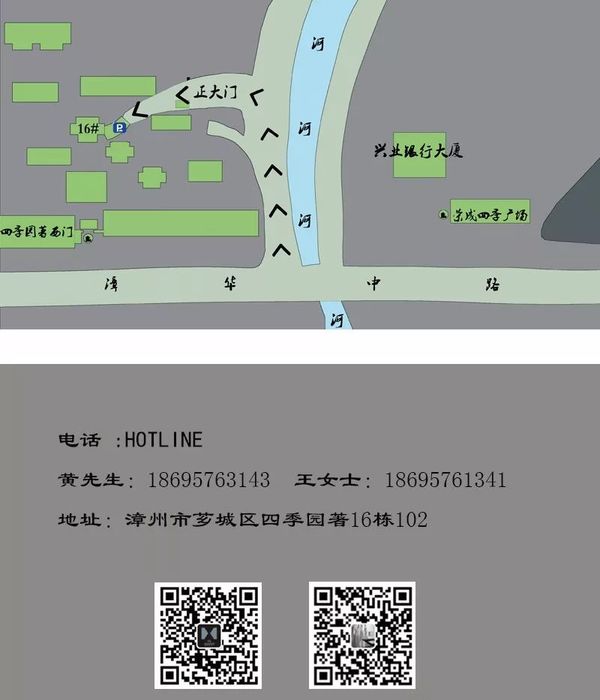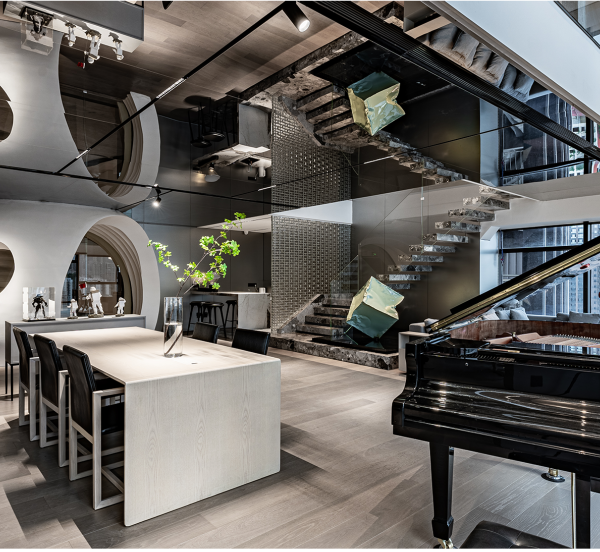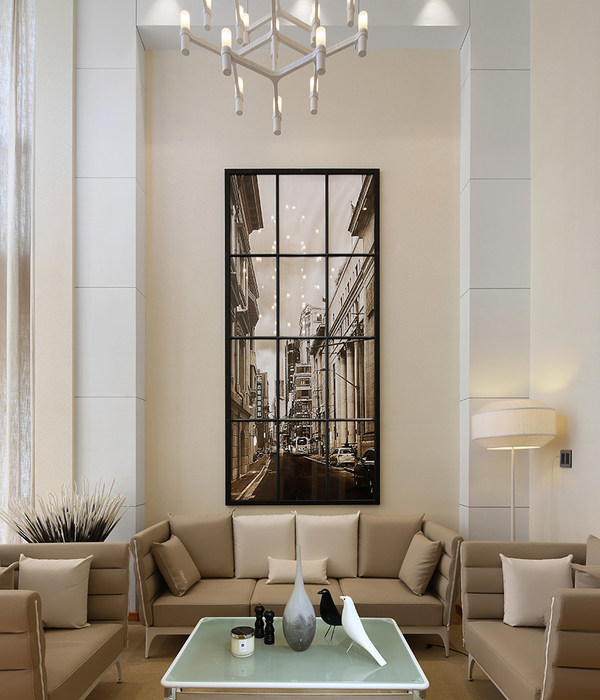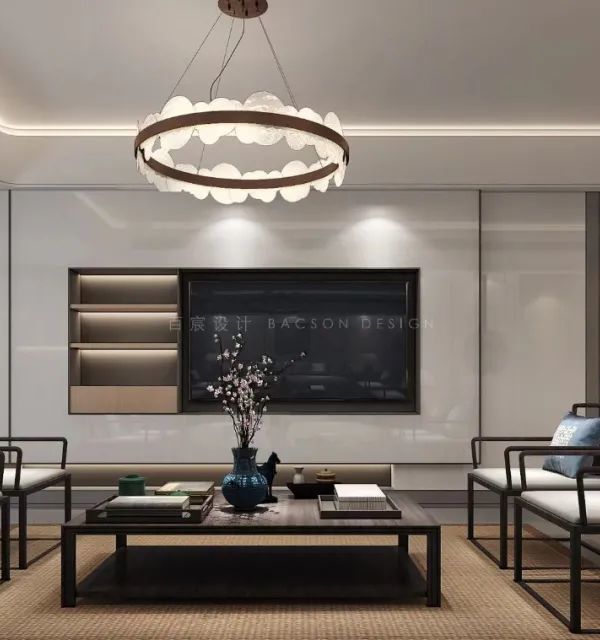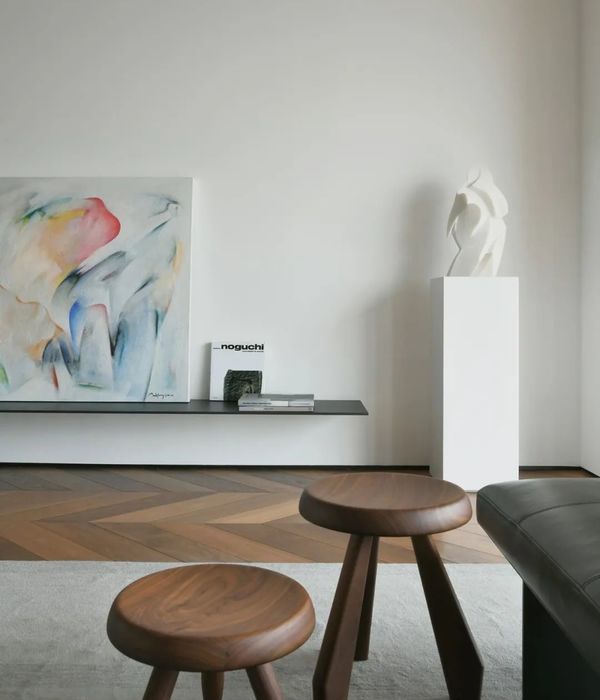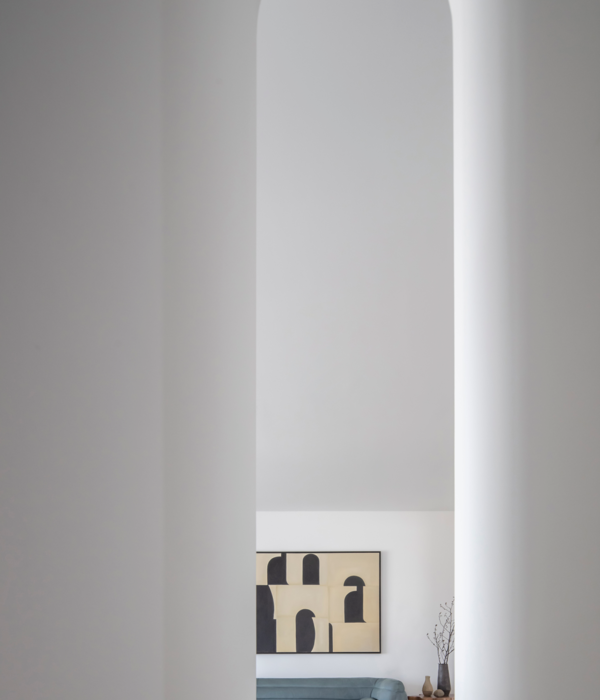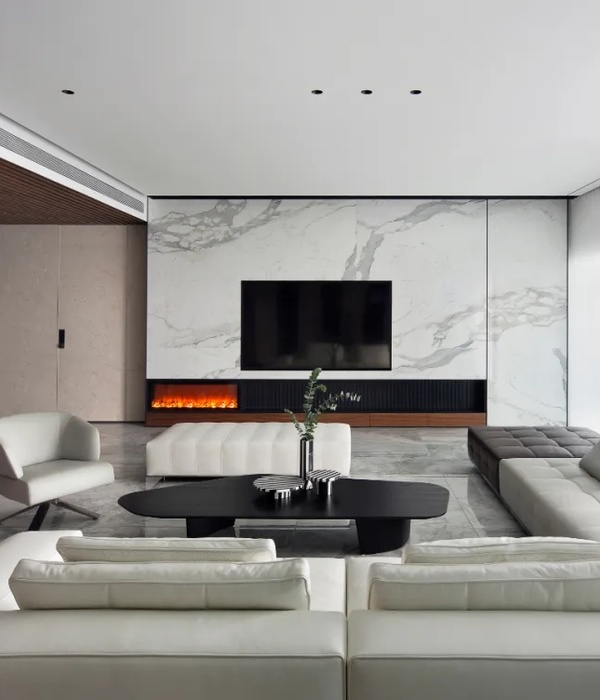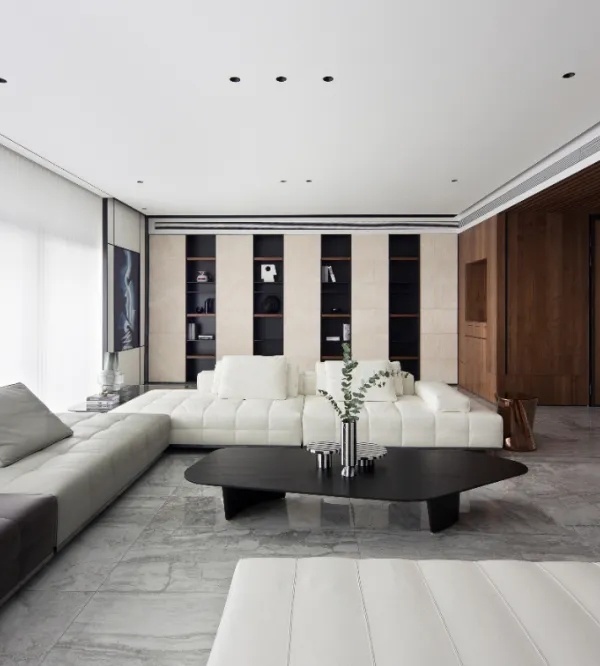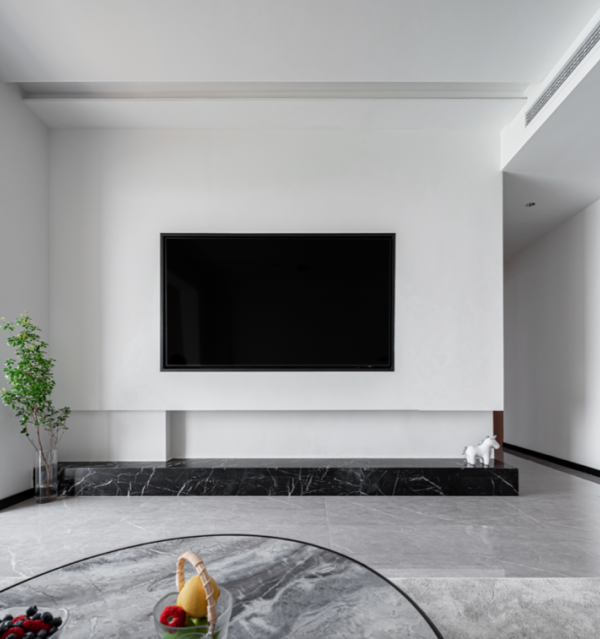一号副楼 Pavilion I
建筑位于实验楼和原有砖楼之间的转角处。它不仅要满足多功能副楼的一切使用需求,还要回应转角这一特殊的地理位置,这为设计带来了很大的挑战。
Located at the turn of the road between the Laboratory building and the existing brick building, Pavilion I, beyond fulfilling the function of a multipurpose pavilion, for which it was designed, also serves the function of coming around the corner. Which is not an easy thing.
两座副楼整体外观,overall external view of the two pavilions©FERNANDO GUERRA
▼一号副楼外观,external view of Pavilion I©FERNANDO GUERRA
▼坡道,ramp©FERNANDO GUERRA
▼由白色混凝土组成的建筑,building composed of white concrete©FERNANDO GUERRA
▼建筑与转角的关系,relationship between the pavilion and the corner©FERNANDO GUERRA
项目从地面花园中升起,缓缓抬升的道路高度,形成了从低到高的蜿蜒路径,如同一名舒展的体操运动员。建筑体量在四周折叠,围合出角落空间。副楼由白色混凝土组成,门窗采用木材和不锈钢框架,可以更好地适应建筑的需要。
Rising above the ground level of the garden, ascending to the road level, creating paths from lower to higher levels, bending or twisting like a balancing gymnast, the volume folds around, making the corner.
White concrete, window and door frames in timber and stainless steel. It will work even better.
▼弧形悬挑,curved cantilever©FERNANDO GUERRA
▼建筑折叠形成的角落空间,corner created by the folding volume©FERNANDO GUERRA
▼从悬挑下看向实验楼,view to the laboratory building from under the cantilever©FERNANDO GUERRA
▼建筑与砖楼的对比,contrast between the pavilion and the brick building©FERNANDO GUERRA
二号副楼的主要功能是为东侧的原有建筑和酒店提供支持。建筑由墙体划分出室外花园空间以及夯土和阶梯道路。
Pavilion II is necessary to support the functions of the existing building to the east and those of the Hotel. Pavilion II is a wall or walls to contain and define the exterior garden spaces and the ramped or stepped pathways.
▼远景鸟瞰,建筑融入环境之中,aerial view from distance, pavilion integrated into the landscape©FERNANDO GUERRA
▼墙体划分不同空间,walls defining different spaces©FERNANDO GUERRA
▼从副楼看向新老建筑,view to the old and new building from the pavilion©FERNANDO GUERRA
砖墙上部由石材制成,形成一种与自然的连续性。
正如之前所说,二号副楼仿佛是一栋不受欢迎的建筑,只能隐藏自身,融入整体之中。
Brick walls capped in stone, giving the desired continuity that nature will absorb. Pavilion II as was said before, came after like something unwanted, integrating itself in the whole, camouflaging itself within the rest.
▼副楼外观,external view of the pavilion©FERNANDO GUERRA
▼从屋顶平台感受自然,feel the nature from the roof terrace©FERNANDO GUERRA
空间用来举办室内活动,园区内外和酒店的游客都可以参加,不会对每栋建筑中特定的日常活动产生影响。
室内活动空间,interior activity space©FERNANDO GUERRA
A space that is reserved for internal events, it can receive visitors from outside, from inside and from the hotel, without interfering with the specific day-to day activities of each building.
曾经的园区入口既不有趣也不实用。新的建筑除了门房,还设置了接待和等候区,并可作为一栋小型住宅供夜勤保安休息。
The access to the Campus is neither interesting nor sensible. The new building apart from the porter’s office, reception and waiting area, functions also as a small dwelling for the night guard.
▼改造后的园区入口,entrance of the campus after renovation ©FERNANDO GUERRA
▼改造前后全区入口对比,comparison of the entrance before and after renovation ©right: FERNANDO GUERRA
▼改造后的入口近景,closer view to the entrance after renovation ©FERNANDO GUERRA
▼新入口与原建筑的关系,relationship between the new entrance and the original building©FERNANDO GUERRA
▼不同材料之间的对比,contrast between different materials ©FERNANDO GUERRA
▼从大厅看向入口,view to the entrance from the lobby©FERNANDO GUERRA
在裸露的白色混凝土内,建筑还提供了一个临时的废弃材料储存室。考虑到这些材料的危险性,设计需要满足一些十分特殊的需求。
In white exposed concrete, the volume also provides an area for the temporary storage of waste materials, which due to the dangers that they present, gives rise to very particular and specific requirements.
structural analysis of the entrance©Álvaro Siza + Carlos Castanheira + Kim Jong Kyu
▼入口细部,entrance details ©FERNANDO GUERRA
当你拿起线球的一端,会发现这根线条永无止境,项目的室外景观设计便是如此,由建筑和交汇处必要的地形塑造组合而成。基地上连续移栽了大量树木,仿佛整容手术一般使环境焕然一新。
As if dealing with a ball of twine out of which we pull a piece and find it to be never ending, the external landscaping is a consequence of the buildings and the necessary moulding of the ground where the intervention has occurred. A site surrounded by lavish vegetation that through continuous transplanting transforms and renews itself. Like plastic surgery on an aging body.
园区概览,overall view of the campus©FERNANDO GUERRA
景观与通道,landscape and paths©FERNANDO GUERRA
▼副楼平面图,plans of the pavilions©Álvaro Siza + Carlos Castanheira + Kim Jong Kyu
▼副楼屋顶平面图,roof plans of the pavilions©Álvaro Siza + Carlos Castanheira + Kim Jong Kyu
▼副楼立面图,elevations of the pavilions©Álvaro Siza + Carlos Castanheira + Kim Jong Kyu
▼副楼剖面图,sections of the pavilions©Álvaro Siza + Carlos Castanheira + Kim Jong Kyu
▼入口立面、剖面、细部图纸,elevation, section and detail drawings of the entrance©Álvaro Siza + Carlos Castanheira + Kim Jong Kyu
节点细部,joints details©Álvaro Siza + Carlos Castanheira + Kim Jong Kyu
PAVILION 1Design Period: 2007.11 – 2008. 09Construction Period: 2009.05 – 2010. 05
Office in Portugal: Carlos Castanheira & Clara Bastai, Lda.
Coordinator: Pedro Carvalho
Collaborators: Ricardo Serra, João Figueiredo
Office in Coreia: 99M.A.R.U. Metropolitan Architecture Research Unit
Coordinator:Kim Soo Young
Collaborators: Kim Hyunee, Yim Hyun Jin
Construction area: 283㎡PAVILION 2Design Period: 2007.11 ~ 2008. 09Construction Period: 2009.05 ~ 2010. 05
Office in Portugal: Carlos Castanheira & Clara Bastai, Lda.
Coordinator: Pedro Carvalho
Collaborators: Liu Kuns, João Figueiredo
Office in Coreia: M.A.R.U. Metropolitan Architecture Research Unit
Coordinator: Kim Soo Young
Collaborators: Kim Hyunee, Yim Hyun Jin
Construction area: 260㎡GATE HOUSEDesign Period: 2007. 11 – 2008. 12Construction Period: 2009.05 – 2010. 05
Office in Portugal: Carlos Castanheira & Clara Bastai, Lda.
Coordinator: Pedro Carvalho
Collaborators: Dalila Gomes, Ricardo Serra, João Figueiredo
Office in Coreia: M.A.R.U. Metropolitan Architecture Research Unit
Coordinator: Kim Soo Young
Collaborators: Kim Hyunee, Yim Hyun Jin
Construction area: 195㎡
Structure: HARMONY Structural Engineering
Mechanical Installations: HANA Consulting Engineers
Electricity: HANYANG Total Electrical Engineering & Construction
Construction Company: DAELIM
{{item.text_origin}}

